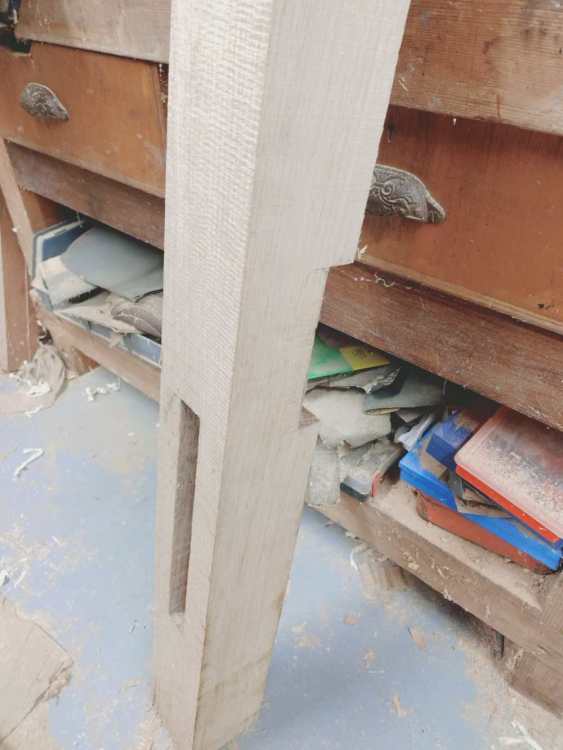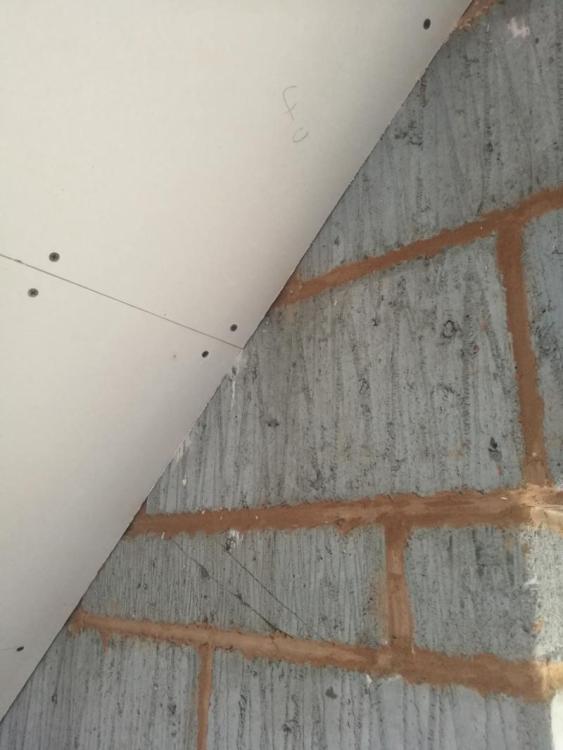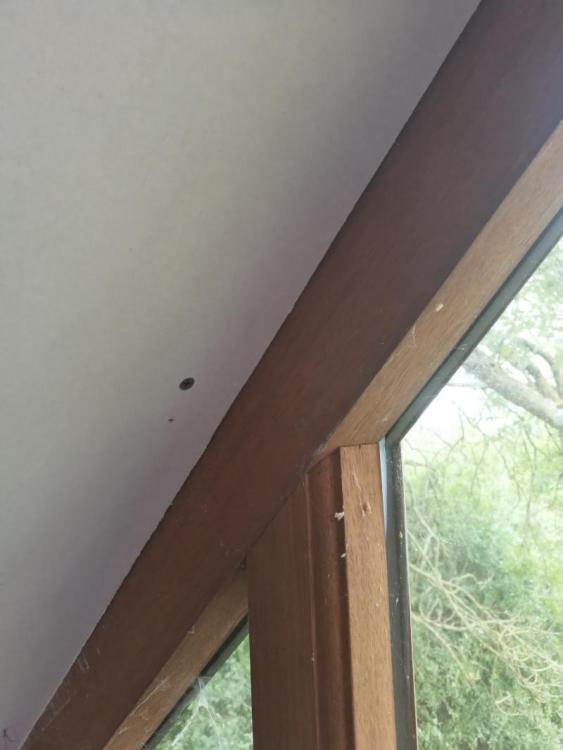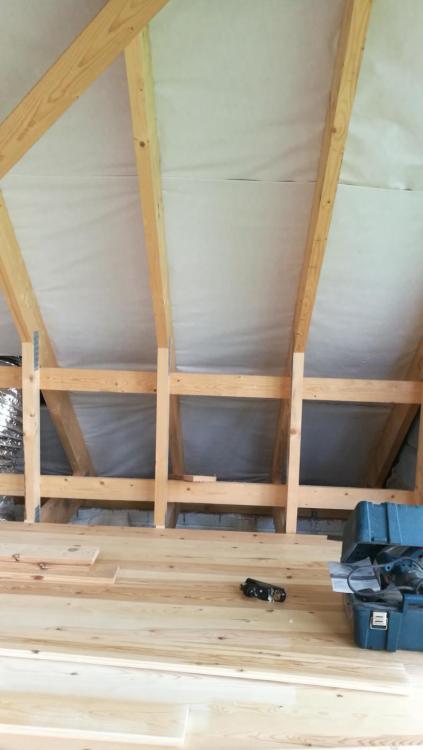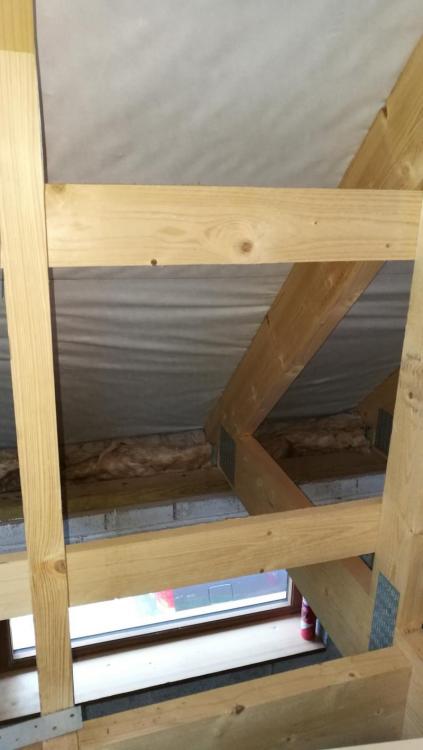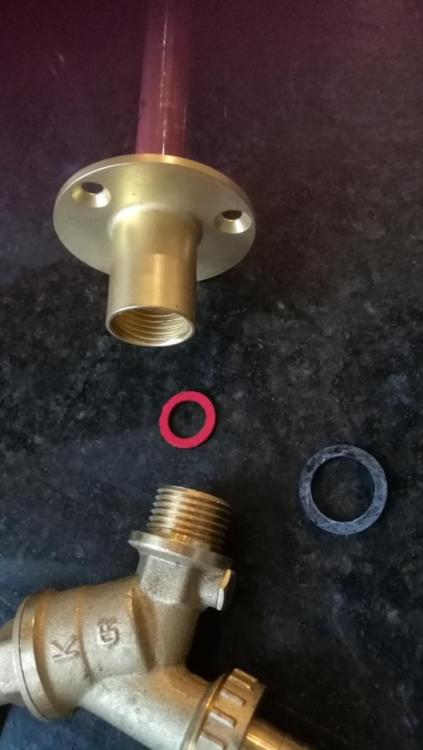
AlanUK
Members-
Posts
67 -
Joined
-
Last visited
Everything posted by AlanUK
-
I think it'll be hard to assemble (giving me limited time to actually put the parts of a complex and large assembly together), and make it impossible to disassemble should I want to, without causing major damage to the wood.
-
I like the idea of staying reasonably traditional, but might perhaps use some sort of bolt too, as suggested in a later post, and avoid the glue. You say it looks dry, and it does in the pic, but it's very very fresh - the wood was very damp when chiselling out the mortice, and it attacked my tools - I couldn't believe how much rust it caused in a day on my bullnose plane.
-
Yes, I have some 20mm dowels. I was thinking of using 4, but maybe that's over the top. There aren't too many forces acting on it. The main one will be the stringer, pushing the bottom in, but it's not a huge force. And I guess if it does start to get wobbly I can always add a SS rod at a later date.
-
Yes, something like that - it would hide the metalwork anyway, And it seems like a stronger solution than using oak dowels and glue.
-
A large screw is possible I guess. I was intending to sink the nuts and washers into an enlarged hole, and cover with a dowel, so they wouldn't be visible.
-
Hi all, I'm building an oak staircase going up to an external oak balcony. On the balcony are two newel posts, that connect to the horizontal floor of the balcony via a cross lap joint. You can see the notch cut in the post in the picture, which engages with a similar notch in the horizontal oak beam of the balcony. It will thus be the only connection to the balcony. The long notch below it is to receive the stringer for the staircase. My question is how these should be fastened. My builder assistant thinks that dowelling and glueing will be sufficient. I am minded to use stainless steel threaded bar and nuts/washers. What would you people recommend? Cheers. Alan
-
So there is a gap left that is the width of the hinge, is that right?
-
Yes, they look posh ones. I was thinking more like this:
-
So, flush hinges. Why are they called that? To get the door or window sitting against the frame, a rebate in one or the other will be needed, otherwise you'll have the thickness of the hinge separating them (albeit just one thickness of metal rather than two with a regular hinge). Is there something I'm not understanding about them?
-
Initially its just going to be painted. I guess it's not too much of a problem there because I'll be painting after the plastering, so I'll cover up any staining. I may render or plasterboard it later.
-
Interesting, thanks. What about when it comes to removal, and there is plaster stuck to the tape - when the tape is removed won't it pull plaster with it, leading to a broken edge?
-
Hi, I'm plasterboarding my garage, and want to plaster to a wooden window surround, and to a breeze-block wall, as shown in the pictures. How do I do that without getting them all messy. Is there a special bead that is used, or masking tape, or what? Thanks.
-
Thanks both.
-
I have a detached garage with room above, that I'm partitioning into two. To maximise available space I want the smallest reasonable door size. Wickes do one at 1981mm x 686mm. Would this pass muster with Building Control? Thanks.
-
Best place to get Ecotherm, Kingspan etc.
AlanUK posted a topic in Lofts, Dormers & Loft Conversions
I have had a garage built, with an office room above, and need to insulate the roof - similar to a loft conversion I'd guess. - please see my post here: Can anyone recommend where in West Mids to get the PIR insulation from? -
Hi there, I have had a garage built, with an office room above. I now have to insulate it, once the electrics are done. The Building Control guy said I need to use 125mm Kingspan/Ecotherm etc PIR, and then nothing else would be needed. My original builder said to put Kingspan in (but not as thick), and then use insulating panels under the plasterboard. I prefer the BCO aproach, as the room above is small enough, without putting additional panels in to make it even smaller. Is either option correct? Also, when putting the PIR in, do I go right down to the wooden beams that are sitting on the concrete? (see second picture below), or do I need to leave a ventilation gap anywhere? Thanks.
-
I've not heard of Denso tape before. It looks too thick for what I want, but I'll bear it in mind if I have need again. Good point about the gas, but in this case it's in a detached garage with no gas going to it, so not an issue.
-
I don't think I'll be removing it very often - I hope. I've painted the copper pipe with primer paint to reduce interaction between the copper and the mortar, but otherwise it's in a fairly tight hole.
-
Yes, that's a good idea. It gives me some freedom if I need to rotate the connection and so put the mounting screws in a different position too.
-
Thank you both. I did wonder about getting it vertical, and was planning on doing what you said Joe. Pete, do compression fittings allow the pipe to be rotated in the fitting after it's connected, or do I still have to get the tap put on first?
-
Here's a basic plumbing question for you. I have this outdoor tap, and pipe with a connected fitting. How do I attach the tap to the fitting without it leaking? I've tried the rubber washer on the outside of the tap thread, and the fibre washer on the inside, and it still leaks under low pressure. Should I be using PTFE tape on the thread perhaps, or am I using the wrong kind of washers? Thanks.
-
Thanks Tony. I'll discuss it with the building regs guys.
-
Ah ok - and would I put that under the Redwood floorboards, or above the ceiling plasterboard of the floor below?
-
It's a detached garage, and the room above will be an office. It' won't be used to live in. Does that make a difference to the regs that I need to meet? Another silly question - Why is a vapour barrier needed? Are you talking about under the floor? The ceiling below (i;e. the garage ceiling) will be covered in fire proof plaster boards - there's no risk of moisture coming up through the floor (unless there's something I'm missing here)
-
Good. I hope only to do it once, otherwise the room will get too narrow. Is 70mm a mandated depth of insulation? My builder said I need to put 25mm insulation boards over the bracing too. But I don't know if it's a requirement.


